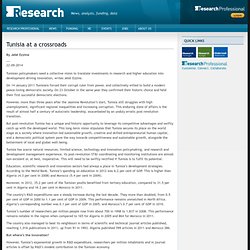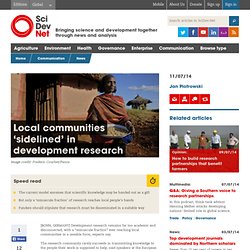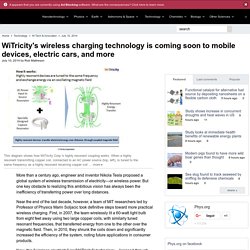

Jelel Ezzine sur Twitter : "Towards a #Pan-African #Innovation #EcoSystem #TAASTI... Money Isn’t Everything. Gross margin percentage is an indicator of “better mousetraps”: product differentiation, low manufacturing cost, or both.

Across the 2004 Global Innovation 1000, it was the only consistent financial benefit of a higher-than-median R&D-to-sales ratio. As shown here, higher-than-median spenders (the light bars) have a higher gross margin percentage than lower spenders (the dark bars). Of all the performance measures we studied, gross margin percentage is most subject to the control of, and influenced by the skills of, the R&D silo. a6ada916-9a5e-480a-9893-a1829a54ef64-large.jpeg (JPEG Image, 850 × 400 pixels) Jelel Ezzine sur Twitter : "ATEI #Innovation Day Presentation Feb 21, 2015... Encouraging innovation: a changing framework for the financing of small-to-medium enterprises : Economic and commercial : ...
Small-to-medium enterprises (SMEs) are often considered major drivers of innovation and competition, and high rates of market entry by new entrepreneurial enterprises are often associated in policy-makers’ minds with positive economic outcomes.

Research at Sussex’s Science Policy Research Unit (SPRU) has made significant contributions to re-evaluating the role of new and small firms in innovation and growth in the UK and EU, helping to change conceptual frameworks used by government policy for supporting and financing innovation in the marketplace. Overview SMEs (<250 employees) make up approximately 99 per cent of all firms in European economies. While SMEs are often thought to be important drivers of innovation and growth, it is widely acknowledged that they find it more difficult to raise money for growth than large companies, which has made them an area of policy concern in the UK since the 1930s.
Achieving impact Future impact Funding and partnership. Research. By Jelel Ezzine Tunisian policymakers need a collective vision to translate investments in research and higher education into development-driving innovation, writes Jelel Ezzine.

On 14 January 2011 Tunisians forced their corrupt ruler from power, and collectively willed to build a modern peace-loving democratic society. On 23 October in the same year they confirmed their historic choice and held their first successful democratic elections. How to use technology to make our planet more sustainable, not less. The controversial demographer Paul Ehrlich distilled the essence of his somewhat apocalyptic 1968 book, The population bomb, into a simple equation: impact (I) = population (P) x affluence (A) x technology (T).

Twenty years later, Ray Anderson, the sustainability pioneer and then-CEO of Interface, asked the question: what if it were possible to move T to the denominator, so that technology reduces, rather than increases, impact on the environment and society? Anderson's challenge is the Apollo mission of the 21st century – a near impossible project that, if achieved, will inspire generations to come. The only difference is that achieving a sustainable technology revolution – let's call it Mission SusTech – is playing for much higher stakes than JF Kennedy's space race. Failure is an option and it's called "overshoot and collapse". The good news is that Mission SusTech is well underway.
What are the trends? What does the future hold? Local communities ‘sidelined’ in development research. [BONN, GERMANY] Development research remains far too academic and disconnected, with a “minuscule fraction” ever reaching local communities in a useable form, experts say.

The research community rarely succeeds in transmitting knowledge to the people their work is supposed to help, said speakers at the European Association of Development Research and Training Institutes’ meeting in Bonn, Germany, last month (23-26 June). This is because research is dominated by a developed-world philosophy that prizes hard, technical data over more practical inquiry, they said. “The amount of research that is getting in the hands of local people and giving them the power to adapt it to make decisions is a minuscule fraction.” Mike Powell, Emergent Issues in Information and Knowledge Management. WiTricity's wireless charging technology is coming soon to mobile devices, electric cars, and more. More than a century ago, engineer and inventor Nikola Tesla proposed a global system of wireless transmission of electricity—or wireless power.

But one key obstacle to realizing this ambitious vision has always been the inefficiency of transferring power over long distances. Near the end of the last decade, however, a team of MIT researchers led by Professor of Physics Marin Soljacic took definitive steps toward more practical wireless charging. First, in 2007, the team wirelessly lit a 60-watt light bulb from eight feet away using two large copper coils, with similarly tuned resonant frequencies, that transferred energy from one to the other over the magnetic field. Then, in 2010, they shrunk the coils down and significantly increased the efficiency of the system, noting future applications in consumer products. Now, this "wireless electricity" (or "WiTricity") technology—licensed through the researchers' startup, WiTricity Corp.
He is not alone. Stronger coupling. Foresight. 10. Innovation Ecosystem.